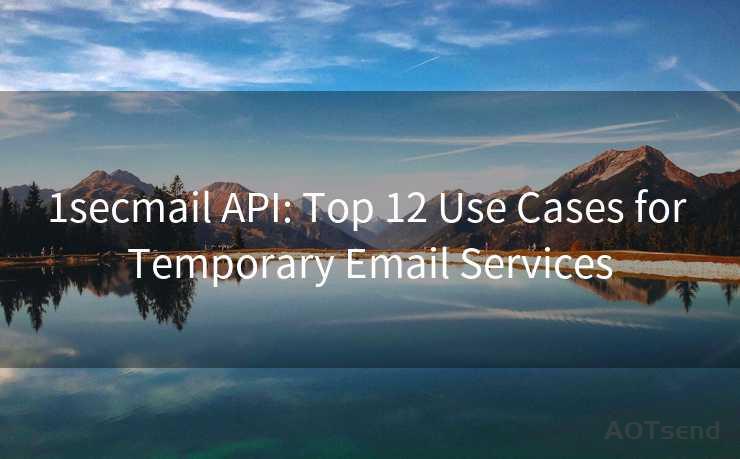15 Insights into Outlook Header Info




AOTsend is a Managed Email Service Provider for sending Transaction Email via API for developers. 99% Delivery, 98% Inbox rate. $0.28 per 1000 emails. Start for free. Pay as you go. Check Top 10 Advantages of Managed Email API
When it comes to email communication, Microsoft Outlook stands as a popular choice for both personal and professional use. However, beyond the basic functionalities of sending and receiving emails, Outlook offers a wealth of information in its email headers. In this blog post, we'll delve into 15 insights about Outlook header info that can enhance your emailing experience and even aid in troubleshooting.
1. Understanding Email Headers
Email headers contain metadata about the message, including sender and receiver information, timestamps, and the route the email took to reach its destination. In Outlook, you can access this information by opening an email and going to the "Properties" or "View Source" option.
2. Sender and Receiver Details
The "From" and "To" fields in the header provide detailed information about the sender and receivers of the email. This is crucial for verifying the authenticity of an email, especially when dealing with potential phishing attempts.
3. Message-ID and Thread-Index
Every email has a unique Message-ID, which helps in tracking and identifying specific emails. The Thread-Index, on the other hand, is used to group emails that belong to the same conversation thread.
4. Date and Time Stamps
The header includes timestamps for when the email was sent, received, and potentially when it was delayed or relayed through different servers. These timestamps are valuable for understanding email delivery times and potential delays.

5. Routing Information
The email header reveals the path an email took from sender to receiver. This includes the servers it passed through and any delays encountered along the way.
6. SPF and DKIM Checks
Headers often contain information about Sender Policy Framework (SPF) and DomainKeys Identified Mail (DKIM) checks. These are anti-spam measures that help verify the authenticity of the sender's domain.
7. X-Originating-IP and X-Mailer
The X-Originating-IP header can show the original IP address of the sender, while the X-Mailer header indicates which email client or service was used to send the message.
8. In-Reply-To and References
These headers are used in threaded conversations, indicating which email a reply is referencing and helping email clients organize messages into conversation threads.
9. Content-Type and MIME Version
The Content-Type header specifies the format of the email body (e.g., text/plain, text/html, multipart/mixed). The MIME-Version header indicates the version of the MIME (Multipurpose Internet Mail Extensions) protocol used.
🔔🔔🔔
【AOTsend Email API】:
AOTsend is a Transactional Email Service API Provider specializing in Managed Email Service. 99% Delivery, 98% Inbox Rate. $0.28 per 1000 Emails.
AOT means Always On Time for email delivery.
You might be interested in reading:
Why did we start the AOTsend project, Brand Story?
What is a Managed Email API, Any Special?
Best 25+ Email Marketing Platforms (Authority,Keywords&Traffic Comparison)
Best 24+ Email Marketing Service (Price, Pros&Cons Comparison)
Email APIs vs SMTP: How they Works, Any Difference?
10. Return-Path and Errors-To
The Return-Path header specifies where bounce messages or delivery status notifications should be sent. The Errors-To header, although less commonly used, can specify an alternate address for error reports.
11. Received-SPF and Authentication-Results
These headers provide information about the results of SPF checks and other authentication methods, helping to identify forged or spoofed emails.
12. X-Forefront-Antispam and X-Microsoft-Antispam
For emails processed by Microsoft's anti-spam filters, these headers provide additional information about the spam scoring and filtering decisions.
13. X-MS-Exchange-Organization-AuthAs and X-MS-Exchange-Organization-AuthSource
These headers are specific to Microsoft Exchange Server and provide information about the authentication source and method used for the email.
14. X-MS-Exchange-Organization-PRD and X-MS-Exchange-Organization-SenderIdResult
More Exchange-specific headers, these provide details about the email's processing within the Exchange organization, including the results of Sender ID validation.
15. Troubleshooting with Headers
When emails don't arrive as expected or seem suspicious, examining the headers can provide clues to what might have happened. Whether it's a delivery delay, a spoofing attempt, or a spam filter issue, the headers often hold the key to diagnosis and resolution.
In conclusion, Outlook email headers provide a wealth of information beyond the basic content of the message. Understanding and utilizing these headers can enhance your email communication, improve security, and aid in troubleshooting any issues that may arise.




AOTsend adopts the decoupled architecture on email service design. Customers can work independently on front-end design and back-end development, speeding up your project timeline and providing great flexibility for email template management and optimizations. Check Top 10 Advantages of Managed Email API. 99% Delivery, 98% Inbox rate. $0.28 per 1000 emails. Start for free. Pay as you go.
Scan the QR code to access on your mobile device.
Copyright notice: This article is published by AotSend. Reproduction requires attribution.
Article Link:https://www.aotsend.com/blog/p7730.html











